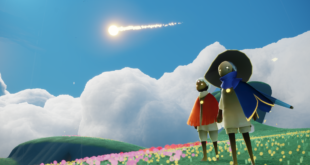Since Kickstarter first grabbed the attention of the gaming world, new and more ambitious crowdfunding sites have emerged promising platforms geared specifically towards the needs of games developers.
Among them is Gambitious, a site that launched back in 2012 and makes the bold claim that every title signed in its first year of publishing was both successfully funded and released. It even reports that four of the first six titles made a profit within their first month of sales.
These are impressive and enticing claims in a climate where the cloud of failed Kickstarter campaigns and unreleased-yet-funded titles hangs over the indie sector. We spoke to the minds behind Gambitious to find out how this success was achieved – and whether other developers can share in it.
Is there still a stigma about crowdfunding, both from an industry and consumer perspective –concerns about unreleased games, campaigns that don’t raise their funding, and so on? How can we as an industry turn this around?
Mike Wilson, co-founder: There definitely is. We see crowdfunding as the best thing to happen to the indie dev side of the industry since we’ve been in it – which is a very long time at this point – and wanted to create a platform to protect this opportunity and ensure that there is a path forward beyond the wild west gold rush and trail of disappointments that was sure to follow.
If you read our interviews from 2012, you’ll see we were saying the exact same thing then, even though DoubleFine had just broken the 1m barrier for the first time of any project on Kickstarter when we started. We were as excited as anyone, but with our experience we knew what would happen, no matter how good the intentions of the artists involved were. We also knew there would be some bad actors taking advantage of this "free money".
We think there will be a natural correction in the number of titles being presented and funded via KS, as the fatigue and unfulfilled promises have their effect, and that’s fine. But we also want to shine a light showing that it doesn’t have to be this way by providing a more professional approach to handling the crowd’s money, whether it’s an investment or a donation.
What’s been the biggest challenge in explaining the Gambitious model/concept to developers? How have you addressed this?
Paul Hanraets, CEO: In all honesty, we don’t encounter any problems in explaining our current model to developers as it is pretty straightforward. If our team is really excited about your game we sign it as the publisher and we guarantee the funding and especially the services needed to complete development and get your game successfully released.
For the funding, we can rely on our own network of investors who invest alongside us under the exact same terms and conditions. Developers don’t need to worry about dealing with a large group of backers or investors as we are their only point of contact and we are here to help and support them.
For the developers, we make sure that where the money comes from or how the risk on the project is shared is not their concern, as they don’t have to pitch anyone or interact with anyone other than our publishing team.
We only accept projects that we as a team are excited about and therefore have vetted and signed as a publisher.
Numerous other crowdfunding sites claim to be the first to merge funding and publishing, but Gambitious has been around for three years. Do you think you could have done/could be doing more to raise your profile? How are you going to accomplish this going forward?
Hanraets: Gambitious was founded in 2012 as (the first) international crowdfunding platform for the games industry. After we successfully crowdfunded and published our first title Train Fever, the rules and regulations for equity-based crowdfunding rapidly changed and evolved per territory and became extremely foggy. It would be fair to call it a legal minefield.
We decided to stay on the safe side and focus on our publishing activities, meanwhile transforming our platform into a private investor portal for a small group of investors consisting of friends and family and our professional network. We are now steadily growing our current network and are accepting new investors: US accredited investors and qualified investors from the EU only. We do, however, continue to explore options to accept non-accredited investors from the EU and especially the US as the JOBS Act Title III regulatory guidelines become clearer.
How does Gambitious avoid overpromising and underdelivering to its developer partners? What do you do that’s different?
Wilson: Our publishing team has relied heavily on the experience of the founding partners involved and our expertise in dealing with up-and-coming indies especially. They are a special, wonderful breed, and honestly the only thing that keeps me excited about working in this industry.
The only way to avoid disappointment from either side is to be very direct and transparent about the entire roadmap to release, including costs of every aspect with as much accuracy as possible, exactly how development delays would impact the ongoing costs of everything else, and to make informed decisions together.
The fact that we raise contingency funds to be deployed as needed, and have an agreed upon deal for what happens if we have to use those funds helps tremendously as well. Again, if you just remove all the mystery from the process – other than the black magic of what makes a game fun to play – the trust and understanding come very naturally.
The only way to avoid disappointment from either side is to be very direct and transparent about the entire roadmap to release, including costs of every aspect with as much accuracy as possible.
How do you explain the high success rate for games funded through your platform?
Hanraets: We only accept projects that we as a team are excited about and therefore have vetted and signed as a publisher. We guarantee the project funding, lead the financing and raise money from our growing investor network. We now have a core group of 30 investors who are eager to invest in all the new projects probably also because four of our first six titles returned a profit within the first month of sales. But we are now allowing our investor network to grow so we can greenlight more titles.
Any plans to open Gambitious to public backing – or at least wider industry backing?
Hanraets: Yes, we believe very much in the model where the public is also able to invest smaller amounts in our game projects. Our first title Train Fever was crowdfunded by both non-accredited (gamers) as more the experienced accredited investors. There was even a very nice synergy between both investor groups. Thus we continue to explore options to re-accept non-accredited investors from both the EU and US, but people not accustomed to investing can be more likely to invest more than they can afford without really reading all the disclaimers and risks involved. We take the responsibility of this very seriously and will therefore before going back to public facing raises wait for the various financial authorities to clearly lay out the rules.
There will be a natural correction in the number of titles being presented and funded via KickStarter, as the fatigue and unfulfilled promises have their effect, and that’s fine.
How can developers get involved?
Wilson: You simply reach out via games@gambitious.com with the same materials, as you would use to pitch any publisher. Again, for the developers, the experience is no different in working with us as it would be, say Devolver. That’s our mission.
How should developers prepare before using Gambitious? How can they improve their chances of being vetted and signed?
Wilson: Just make your best pitch, with a playable demo preferably, and then be prepared to work with our team to answer as many questions as possible about your development plan, platforms, schedule, budget, and so on. We are very open about the entire process, and the developers we sign on have the last say on pretty much everything during, so we look for developers that are ready to be similarly open and transparent.
What are your investors looking for? What do they expect of developers?
Hanraets: Our investor network consists of friends, family, and people in our professional networks that are familiar with our track record and experience and feel like they can trust us as they invest alongside us.
Lately we do see that some of our more game-savvy investors tend to invest in titles based on their personal preference for a specific game genre. We have also noticed that the pixel art games can sometimes be harder to get investors excited about. Those games need more explanation in supporting materials, so graphic splendor in art assets and trailers help. But for the most part, they follow our lead as the experts.
Gambitious was created to scale and grow, to be able to say ‘Yes’ to as many great projects as we possibly can.
How closely do you work with developers? Crucially, what do you not get involved in?
Wilson: We work very closely with them, communicating every week, to do our very best to help one another avoid costly surprises. Changes and delays happen during development inevitably, but as long as communication is constant and completely transparent, we can pivot and adjust in a fairly frictionless manner.
That’s our job, to protect the interests of everyone involved from the developers to the investors, as the people with the experience. More seasoned developers might need less guidance, obviously, but they can still make huge missteps that impact everything; obviously we can’t prevent all of these, but we have to stay very informed.
What we do not get involved in are creative decisions, except in giving feedback and opinions when asked. The developer has final say on everything, including our PR/Marketing materials. So we really get involved in whatever a team needs, whether it being sourcing great contractors for writing help or music or VO or whatever it might be, and always remind each other to not get involved in things the devs truly don’t need or want help on.
How will you grow and improve Gambitious going forwards?
Hanraets: We have an international focus and aim to grow our investor network accepting investors from all major territories. This will enable us to expand our team and to scale up our project in both numbers and scope.
We are also about to launch our redesigned investor portal featuring a new and improved dashboard displaying the investor’s portfolio and associated performance metrics. The portal will have fully automated the investor process whereas the investor confirms his interest by electronically signing the agreement and is offered the opportunity to allocate and receive funds via an incorporated E-wallet.
Wilson: Gambitious was created to scale and grow, to be able to say ‘Yes’ to as many great projects as we possibly can, while maintaining our very careful approach so that new game investors come away with a positive experience.
So this year and next you will see our team and our brand grow along with our portfolio of great indie titles. We’re super excited to be where we are at in 2016, and are ready to get on with the vision in a much bigger way.

 MCV/DEVELOP News, events, research and jobs from the games industry
MCV/DEVELOP News, events, research and jobs from the games industry



